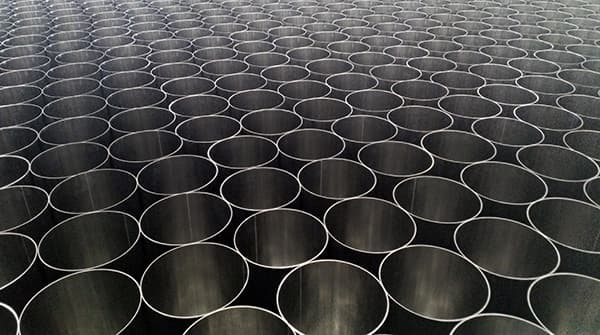The Material Type to Manufacture 304 and 316 Welded Stainless Tubing

Image Description:
Welded Stainless Tubing
Steel is one material in the history of humankind that holds an immense amount of significance. Its production goes back more than 1500 years. Since then, it has evolved. The industrial revolution and World War 2 were the two periods in history when advancements in technology and manufacturing techniques led to large-scale adoption. Today, one of the variants, stainless steel, makes up a large chunk of the welded stainless tubing industry.
Welded Stainless Tubing
Tubing is extremely important for many industries, such as automotive, power, and chemical processing. It allows fluids with different chemical and physical properties to be carried within the systems.
Seamless and welded stainless tubing is most commonly employed in processes requiring strength, durability, and some level of corrosion resistance. Welded stainless tubing is formed by cutting strips of stainless steel and drawing them through rollers into a tubular shape. Once the shape is formed, the edges are welded along the length of the tube to close it. Subsequently, hydro testing gauges the integrity of the welds and ensures the tube can withstand a certain pressure.
There are many grades of steel that can be used to manufacture welded stainless tubing. The one you select depends on the specifications of your processes and the working environment. Here are some of the most common ones.

Image Description: Foundry
304/304-L
304 steel has a high concentration of chromium and nickel by mass, 18-20% and 8-10%, respectively. The chromium in its composition gives it corrosion resistance properties and enables it to withstand harsh environments by forming a protective oxide layer on its surface. However, this composition is not weld-friendly. During the welding process, surges of high temperature are required to fuse two metals together. This excessive temperature at the seam causes chromium and carbon to combine and precipitate out, leaving a weaker and less resistant joint.
To mitigate precipitation, the 304-L steel variant can be used instead to manufacture welded seamless tubing. It has a lower concentration of carbon by mass, allowing for more durable and corrosion-resistant weld seams.
316/316L
One of the limitations of 304/304-L steel is that its corrosion-resistant properties fall short when protecting against chloride salts. Chloride salts have the potential to penetrate deep into the chromium oxide layer and corrode the metal. In cases when you need additional protection, the 316/316L are better steel variants for manufacturing welded stainless tubing. They can resist chloride attacks due to another ingredient - molybdenum. 2-3% Molybdenum by weight is sufficient to resist chloride salts, making it perfect for use in offshore oil rigs and marine applications.
Is Welded Stainless Tubing Worth It?
Which type of tubing you need depends entirely on a number of factors like the corrosion resistance your tubing requires, what kind of temperatures and pressures it'll have to sustain, and how quickly you need it.
Welded stainless tubing may not be able to withstand pressures as high as seamless, due to its seams being the weakest link in its construction. However, it is readily available and can be purchased at longer lengths, making it more cost-effective to install when time is short.